You may find the need to disable the Touch Screen on your Windows computer, if it is not working properly or bothering you with Phantom or Ghost Touch.
Even if the Touch Screen is working properly, you may want to disable the Touch Screen to prevent the possibility of opening a wrong slide or file during a presentation or prevent your children from being able to delete files or change settings on the computer.
Disable Touch Screen in Windows 10/11
As you must have noticed, an easy option to Enable/Disable the Touch Screen is not available in the Settings menu. However, it is still possible to disable the Touch Screen on a Windows 11/10 computer using the following methods.
Before going ahead with the steps to disable Touch Screen, make sure that the keyboard and the mouse are working properly on your computer.
1. Switch OFF Touch Screen Using Device Manager
The easiest way to disable any device on a Windows computer is by using the Device Manager Utility as available in Windows.
1. Right-click on the Start button and click on Device Manager.
2. On Device Manager screen, expand Human Interface Devices entry > right-click on HID-Compliant Touch Screen and select Disable Device option.
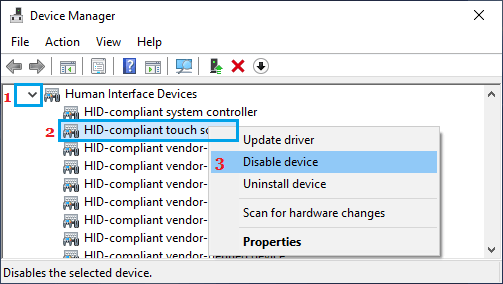
3. On the confirmation pop-up, click on Yes to confirm.
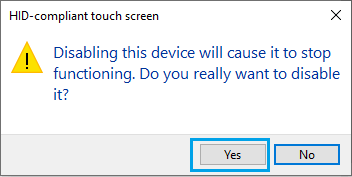
After this you won’t be able to use the Touch Screen on your computer, until the next restart.
2. Disable Touch Screen Using Registry
If you do not want the Touch Screen to become active after Restart, you can modify the Registry to prevent this from happening.
1. Right-click on Start Button and click on Run. In the Run Command window, type regedit and click on OK.

2. On the Registry screen, navigate to Computer\HKEY_CURRENT_USER\Software\Microsoft\Wisp\Touch
3. Click on Touch Folder in the left-pane. In the right-pane, right-click in any empty space and select DWORD (32-bit) Value option.
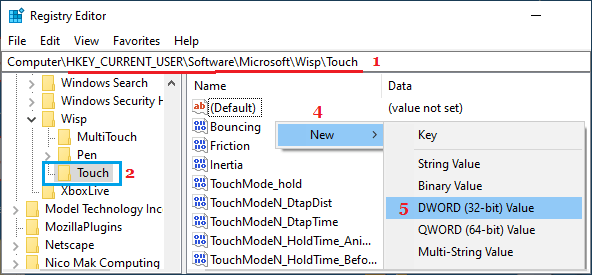
4. Name this newly created DWORD as TouchGate.
5. Double-click on TouchGate and make sure its value is 0.
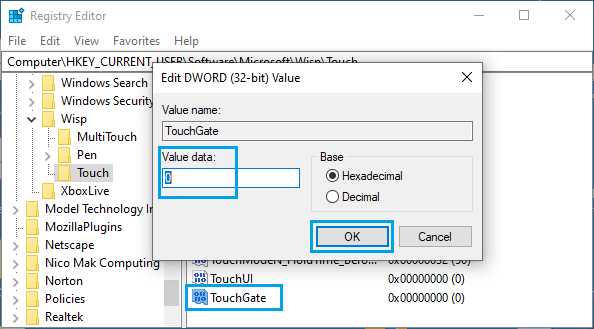
6. Restart the computer for the above change to be implemented.
After the computer restarts, you will not be able to use the Touch Screen.
If required, you can enable Touch Screen on your computer by changing the TouchGate value from 0 to 1 or by deleting the TouchGate entry.
Enable Touch Screen in Windows 10/11
As mentioned above, Windows should automatically Enable the Touch Screen, when you restart the computer. If this does not happen, you can manually enable Touch Screen using the following steps.
1. Right-click on the Start button and click on Device Manager.
2. On Device Manager screen, expand Human Interface Devices entry > right-click on HID-Compliant Touch Screen and select Enable Device option.
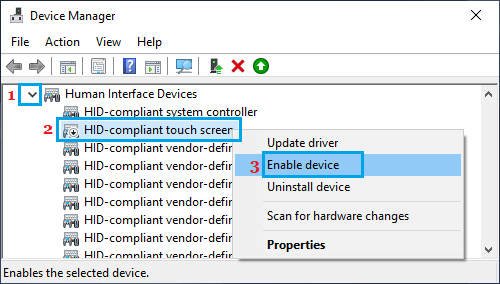
After this, you will be able to use the Touch Screen method of input on your computer.